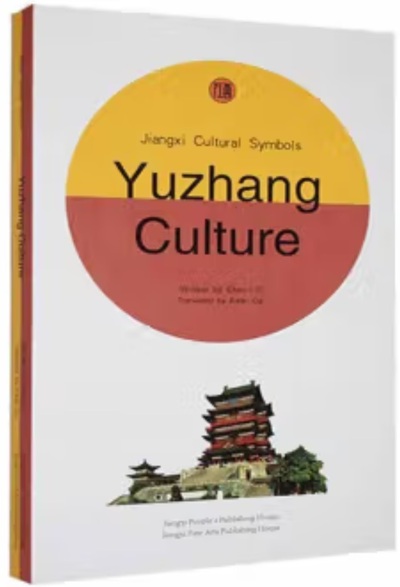Nous utilisons des cookies pour améliorer votre expérience. Pour nous conformer à la nouvelle directive sur la vie privée, nous devons demander votre consentement à l’utilisation de ces cookies. En savoir plus.
Jiangxi Cultural Symbols : Yuzhang Culture
EAN : 9787210137849
Édition papier
EAN : 9787210137849
Paru le : 1 févr. 2022
15,00 €
14,22 €
Disponible
Pour connaître votre prix et commander, identifiez-vous
Notre engagement qualité
-
 Livraison gratuite
Livraison gratuite
en France sans minimum
de commande -
 Manquants maintenus
Manquants maintenus
en commande
automatiquement -
 Un interlocuteur
Un interlocuteur
unique pour toutes
vos commandes -
 Toutes les licences
Toutes les licences
numériques du marché
au tarif éditeur -
 Assistance téléphonique
Assistance téléphonique
personalisée sur le
numérique -
 Service client
Service client
Du Lundi au vendredi
de 9h à 18h
- EAN13 : 9787210137849
- Date Parution : 1 févr. 2022
- Disponibilite : Disponible
- Barème de remise : NS
- Nombre de pages : 175
- Format : H:13 mm L:240 mm E:145 mm
- Poids : 380gr
- Résumé : 豫章文化,或称南昌文化、洪州文化、洪都文化,泛指以今日中华人民共和国江西省南昌市为核心的大南昌地区从古至今所创造的物质文明和精神文明的所有成果。 广义而言的大南昌地区,除了今日的南昌市(四县五区)外,还包括历史上曾经从属于南昌府(洪州)的丰城、奉新、靖安、修水及永修等 The Yuzhang Culture is a manifestation of Yuzhang people's lefestyles, which encompass Yuzhang citizens' guiding principles and perceptions of the world. The Yuzhang culture is also a typical example of the Jiangxi culture. It radiates from Nanchang City to surrounding counties and districts and finally throughout the whole province. Gradually, it evolves into the Jiangxi culture as it is. There are a number of physical entities that reflect the Yuzhang culture. The Yuzhang ancient city walls, although currently buried into oblivion, still somehow exist in another form in this world. Guan Yinh built Nanchang city walls under an imperial decree in the early Western Han Dynasty (206 BCE - 25 CE), and the construction was finally completed by Luo Zhu. The Nanchang city walls set an example for other local governments of Jiangxi in terms of wall construction.During the reign of Emperor Renzong of Northern Song Dynasty, Nanchang city reached its largest size in history. Subsequent to the Northern Song Dynasty (960-1127), although city walls became increasingly robust, the city size continuously shrank. Ancient villages in Yuzhang walue the harmony between nature and human beings ---- a philosophical idea that has science behind it. A typical Yuzhang residence is equipped with an independent courtyard, commonly built with slabs and grey tiles. Burial customs in Yuzhang did not automatically emerge all of a sudden. In fact , the selection of burial spots was the result of a prolonged social development. The marquis of Haihun, Liu He, could have picked a perfect burial spot within his fief, but in reality, his tomb is not located at a place with good fengshui directions in a traditional sense. Prince Ning of the Ming dynasty (1368-1644), Zhu Quan, was buried at the mountain to the sorthweast of Mount Gou, following perfect fengshui directions by chinese traditions....... The principles of living in the yuzhang culture wary, but the belief in "farming and reading" is one of the most well-accepted guilding principles among Nanchang people. Yuzhang produced numberless prominent figures and celebrities..... We cannot, as a matter of course, include all aspects of the Yuzhang culture...
- Biographie : 郭建晖, 中国江西省人大社会委主任委员、省记协主席 郭建晖,男,汉族,1963年6月生,江西景德镇人,1983年参加工作,中共党员,厦门大学博士毕业,博士后,教授,享受“国务院特殊津贴”专家。现任江西省人大社会委主任委员、省记协主席。


